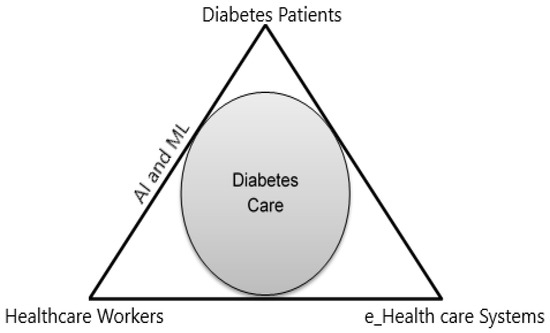Introduction
A Regional Diabetes recent study has raised concerns about the growing diabetes epidemic in Saudi Arabia, revealing alarming regional disparities in the prevalence and management of Type 2 Diabetes Mellitus (T2DM). This research, published in the Frontiers in Clinical Diabetes and Healthcare journal, underscores the pressing need for the government and healthcare systems to address the rising numbers of diabetes cases across the Kingdom. The study also emphasizes the importance of region-specific strategies to effectively tackle the diabetes crisis and prevent long-term complications associated with the disease.
Study Overview
The study, titled “Status of Diabetes Mellitus in Different Regions of KSA and Update on Its Management,” conducted a thorough analysis of the state of T2DM in Saudi Arabia. It explored key factors contributing to the high rates of diabetes and the challenges patients face in managing the disease. The research team also investigated the availability of medical resources and treatments, highlighting how some regions of the Kingdom are disproportionately affected by this chronic condition. This research aims to provide insights into how healthcare systems can be optimized to reduce the burden of diabetes and improve patient outcomes across all regions of Saudi Arabia.
Key Findings

- Regional Variations in T2DM Prevalence One of the most striking findings from the study is the significant variation in the prevalence of Type 2 diabetes between different regions of Saudi Arabia. Urban areas, particularly those in the Central and Eastern regions, show notably higher diabetes rates compared to rural regions. This trend can be largely attributed to rapid urbanization, changes in diet, sedentary lifestyles, and limited access to preventive healthcare in certain areas. The study revealed that cities like Riyadh, Jeddah, and Dammam, which are located in urban centers, have seen a sharp increase in diabetes cases, particularly among the younger population. The higher prevalence in these urban areas may be influenced by factors such as poor diet choices, increased consumption of fast foods, high sugar intake, and a lack of physical activity due to busy lifestyles. In contrast, rural areas experience fewer cases of diabetes, though the rates are still rising steadily. These areas face their own set of challenges, including limited access to specialized healthcare services and a lack of public health campaigns addressing lifestyle changes.
- Complications and Comorbidities The study found that many patients diagnosed with T2DM suffer from a variety of complications and comorbidities. These include cardiovascular diseases, kidney failure (nephropathy), diabetic retinopathy (a condition affecting the eyes), and neuropathy (nerve damage). In fact, one of the most concerning aspects of the research is the high rate of complications observed in patients who do not manage their diabetes properly. Poor blood sugar control and a lack of regular monitoring often lead to the worsening of these complications, which in turn results in a decreased quality of life and increased healthcare costs. Furthermore, the study revealed that some patients are not fully aware of the severity of these complications, which highlights the importance of educating the public about the risks of untreated diabetes.
- Current Management Practices Although Saudi Arabia has made strides in improving diabetes care, the study highlighted several inconsistencies in the management practices of T2DM across the country. The availability of specialized healthcare professionals and advanced treatment options varies greatly between regions. In more urbanized areas, such as Riyadh, patients tend to have better access to endocrinologists, diabetic educators, and modern treatment methods. However, in rural areas, access to these specialized services is limited, and many patients face long waiting times to see a specialist. The study also pointed out that while there are treatment protocols in place, there is no standardized approach to managing diabetes across different regions of the Kingdom. This lack of uniformity can result in inconsistent care, with some patients receiving more comprehensive treatment than others based on their location. The research team recommended the implementation of uniform treatment guidelines and better training for healthcare providers to ensure that all patients receive high-quality care regardless of where they live.
Implications for Public Health
The findings of this study have far-reaching implications for public health in Saudi Arabia, particularly in terms of addressing the diabetes epidemic and ensuring equitable healthcare for all citizens. Several recommendations emerged from the research to help improve diabetes prevention, management, and overall care:
- Need for Region-Specific Interventions: The study emphasized that diabetes interventions should be tailored to the unique challenges of each region. For instance, urban areas may benefit from public health campaigns aimed at reducing unhealthy dietary habits and promoting physical activity, while rural regions may require increased access to specialized diabetes care and education. Targeted interventions could help reduce the growing disparity in diabetes rates between different parts of the Kingdom.
- Enhanced Public Awareness and Education: One of the key recommendations from the study is to increase public awareness about the importance of early detection, regular monitoring, and lifestyle changes to prevent and manage diabetes. Educational campaigns aimed at teaching people about the risks of diabetes, healthy eating, and the importance of exercise could play a significant role in reducing the overall burden of the disease.
- Improved Healthcare Infrastructure: The study also stressed the need for investments in healthcare infrastructure, particularly in underserved regions. Increasing the availability of specialized care, training healthcare professionals, and improving access to diabetes management resources could greatly enhance the quality of care for diabetes patients. Furthermore, the government should invest in expanding access to affordable medications and treatment options for all patients, regardless of their location.
Conclusion
The findings from this study serve as a wake-up call for Saudi Arabia’s healthcare system, highlighting the urgent need to address the growing diabetes crisis. With the prevalence of Type 2 diabetes continuing to rise, it is crucial for the Kingdom to implement comprehensive, region-specific healthcare strategies aimed at preventing and managing the disease. By improving healthcare infrastructure, standardizing treatment protocols, and raising public awareness, Saudi Arabia can make significant strides in combating the diabetes epidemic and improving the quality of life for its citizens.
To successfully address the diabetes challenge, the Kingdom must work collaboratively across all levels of government and healthcare systems, with a focus on ensuring that every region has access to the resources and support needed to manage this chronic condition effectively. With the right actions in place, Saudi Arabia has the potential to reduce the prevalence of diabetes and ensure healthier futures for its people.
*For more information and insights into the findings of the study, healthcare professionals and researchers can access the full article in Frontiers in Clinical Diabetes and Healthcare.
McLaren Stuns Rivals as Norris Leads Final Practice in Saudi Arabia



